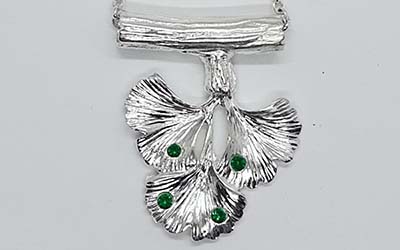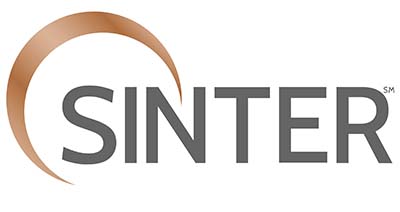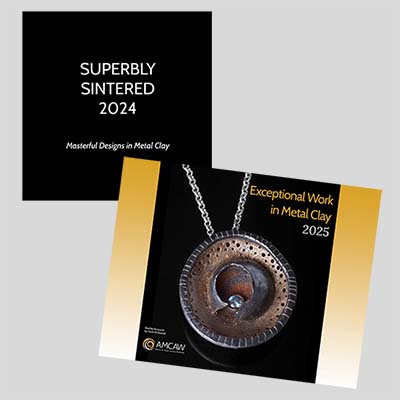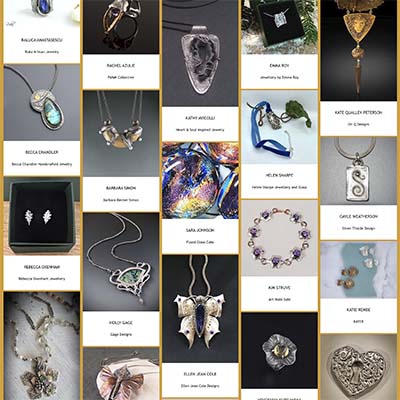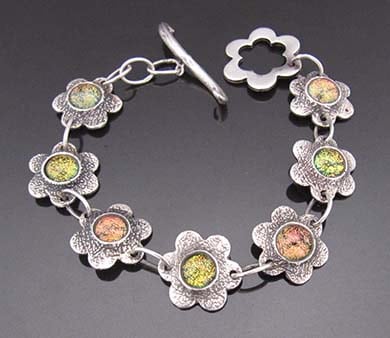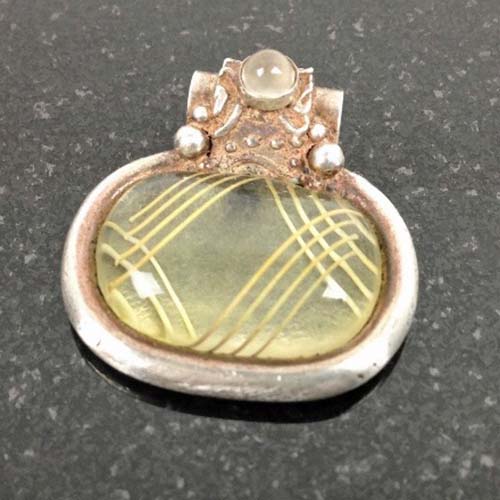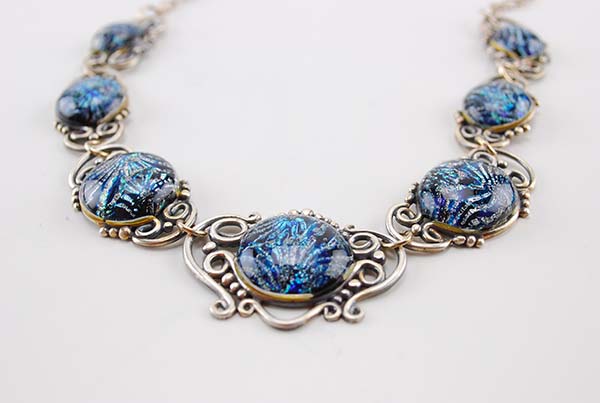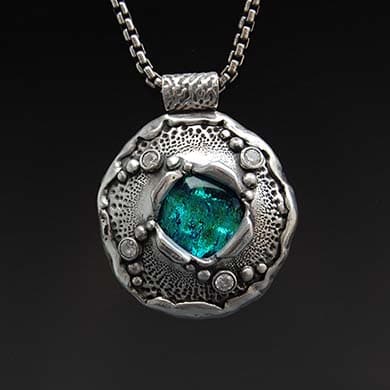The Minimalist Method
There are two distinct methods for including glass with silver clay. As it uses less clay, the minimalist method is considered high-fire at 1350˚F /732˚C, with a hold of 30 minutes. This high-fire method allows the glass to move slightly but requires that the metal clay is only around the glass edges, not behind or over the surface, or the glass will crack. The second method is considered low-fire at 1250˚F /676˚C, with a hold of two hours. The silver clay must physically catch the glass in this method, which uses a backplate and more silver clay along the front.
In the minimalist method, glass cabochons are captured around the edges with a coil or slab of clay with the cabochon’s shape cut out. The piece must remain flat, with the bail added after it is in the leather hard stage, or greenware stage, along the top surface. The bail is used to reinforce the connection if a coil of clay is used. This style has little texture on the clay and is there to contain and enhance the glass. If using the slab technique, more clay is needed, and adding textures is easier. It is essential to reinforce the coil’s connection since this is the weakest place, and during shrinkage, the glass could push the silver frame open.
The firing schedule for the minimalist method:
ramp 1: 800˚F/ 427˚C to 1350˚F/732˚C, hold for 30 minutes, ramp 2: full ramp to 900˚F/ 482˚C, hold for 30 minutes. This is an annealing stage, glass needs to slowly come to the same temperature even if annealed during the cabochon construction, let the kiln cool to room temperature before opening or the glass may crack.


